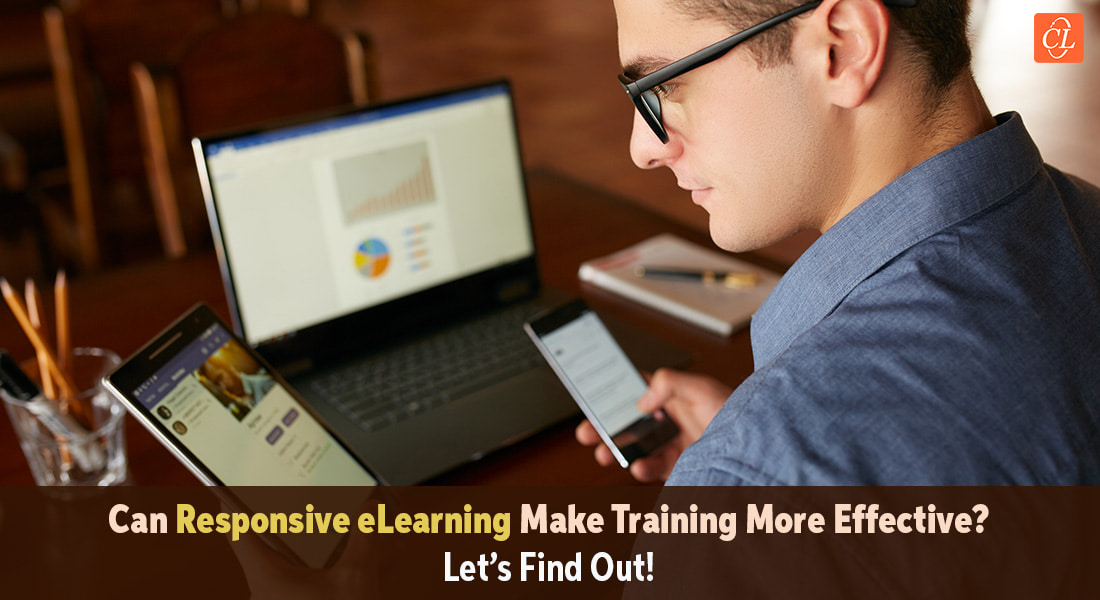10+2 Ways to Take Your Product Knowledge Training from Yawn to Yowza…!

In the dynamic landscape of modern business, product knowledge training is the linchpin that can elevate your team from good to great. As a product training manager or sales training manager, you know that a well-informed team is the heartbeat of successful sales and customer engagement. So, how can you ensure your product knowledge training goes beyond the mundane and becomes a catalyst for excellence? In this blog, we will explore 10 innovative and impactful digital learning formats, including custom eLearning experiences that not only stick but ignite enthusiasm within your teams.
→ Download Now: An L&D Manager’s Guide to Successful Planning and Implementation
Why Use Digital Assets for Product Knowledge Training?
Incorporating digital assets into product knowledge training can transform the learning experience from static to dynamic. Digital assets such as videos, infographics, and interactive eLearning modules provide engaging formats that cater to various learning styles, enhancing information retention and comprehension. These tools offer flexibility and accessibility, allowing team members to learn at their own pace and revisit complex topics as needed.
Furthermore, digital assets can be updated easily, ensuring that content remains current with the latest product developments and industry trends. By utilizing a digital approach, organizations can streamline training processes, reduce costs associated with in-person sessions, and enable real-time metrics tracking to measure effectiveness and engagement.
Table of Contents
- Why Use Digital Assets for Product Knowledge Training?
- How Does Rapid eLearning Improve Product Knowledge Training?
- 10+2 Creative Ways to Design Impactful Product Knowledge Training
- Role of AI in Product Knowledge Training
- Benefits of Translations for Product Knowledge Training
How Does Rapid eLearning Improve Product Knowledge Training?
Rapid eLearning is a powerful tool that can significantly enhance product knowledge training. This approach involves the quick development and deployment of eLearning materials, enabling organizations to respond swiftly to the ever-evolving business landscape. By utilizing rapid eLearning development, companies can ensure that their training content is always up to date with the latest product features and industry innovations. This facilitates a faster onboarding process for new team members and allows current employees to keep pace with product advancements without delay.
Creative Ways to Design Impactful Product Knowledge Training
Explore popular digital assets:
- Custom eLearning courses
- Gamification
- Storytelling
- Product speed dating
- Mobile learning apps
- Much more
Additionally, rapid eLearning – powered by authoring tools – provides the opportunity to create bite-sized, engaging content that can be easily consumed and integrated into employees' busy schedules.
The use of templates, authoring tools, and collaborative online platforms can streamline content creation and deployment, making rapid eLearning a cost-effective and efficient strategy for enhancing product knowledge. Ultimately, by adopting rapid eLearning, organizations can maintain a competitive edge through well-informed and agile teams.
10+2 Creative Ways to Design Impactful Product Knowledge Training
1. Interactive Workshops and Simulations
Interactive workshops and simulations offer more than just conventional training—they provide an experiential journey into the heart of your products. Imagine a workshop where team members step into a simulated customer environment, facing real-time challenges and utilizing product knowledge to overcome them. This hands-on approach enhances retention and practical application.
When it comes to simulations, you can immerse your team in dynamic, scenario-based learning environments where they grapple with real-world challenges, applying product knowledge in hands-on experiences. Set up interactive product stations that allow tactile exploration, turning theoretical understanding into practical mastery.
Incorporate competitive simulations to foster teamwork and engagement, providing immediate feedback for continuous improvement. By embracing cross-functional collaboration, these workshops ensure a holistic understanding of products, promoting synergy within the organization.
2. Custom eLearning
Custom eLearning offers numerous benefits for sales training by providing tailored content that meets the unique needs of sales teams. One effective strategy is the use of scenarios and simulations, which allow learners to engage in realistic situations they may encounter in the field. This immersive approach enhances problem-solving skills and boosts confidence by providing hands-on experience in a safe environment.
Additionally, custom eLearning can incorporate interactive elements such as quizzes and role-playing exercises to reinforce key concepts and facilitate retention. By personalizing the training experience, organizations can address specific knowledge gaps and cater to different learning styles, maximizing engagement and efficacy. This targeted approach not only improves sales performance but also fosters a culture of continuous learning and development within the team.
Product and Sales Training Topics Covered Through Custom eLearning
Custom eLearning allows for an extensive range of topics to be covered, effectively meeting the dynamic needs of today’s product and sales environment. Key topics include:
- Product Features and Benefits: Detailed explanations of product specifications and the unique advantages they offer, empowering sales teams to effectively communicate value to prospects and customers.
- Competitive Analysis: Insights into how products compare with competitors, highlighting distinctive features and benefits, and equipping sales teams with strategic talking points.
- Customer Needs Assessment: Training on identifying and understanding the specific needs and pain points of target customers, enabling more personalized and solution-focused sales pitches.
- Objection Handling Techniques: Strategies for addressing common customer objections and skepticism, turning potential challenges into opportunities for further engagement and sales conversion.
- Market Trends and Innovations: Updates on the latest market developments and technological advancements that impact the product landscape, ensuring the sales team is always informed and forward-thinking.
- Compliance and Ethical Sales Practices: Ensuring all team members adhere to industry regulations and ethical standards, fostering trust and credibility with customers.
By offering these diverse topics through custom eLearning courses, organizations can deliver a comprehensive and adaptable training program that keeps sales teams informed, competitive, and customer-focused.

An L&D Manager's Guide to Successful Planning & Implementation.
Learn:
- What Challenges do L&D Managers Face?
- How to Align Business and Project?
- How to be a Learning Consultancy?
- DOWNLOAD NOW!
3. Gamification
Gamification injects an element of excitement into the learning process, transforming traditional training into an engaging adventure. The concept of gamification revolves around incorporating game mechanics, such as points, badges, and leaderboards, to motivate and challenge participants. Implement leaderboards and tournaments to infuse a sense of healthy competition, motivating individuals to strive for excellence.
Hide surprise challenges or "Easter eggs" within the training modules to keep participants engaged and curious. Utilize a narrative-driven progression that unfolds a storyline as participants advance, making the learning experience not only educational but also entertaining and memorable.
How Gamification Improves Product Knowledge Training
Integrating gamification into product knowledge training revolutionizes how employees engage with and retain crucial information. By transforming learning into a game-like experience, organizations can increase motivation and participation. Gamification taps into intrinsic motivators such as mastery, autonomy, and purpose by providing learners with clear goals and immediate feedback. As participants earn points or badges, they experience a sense of achievement, encouraging them to progress through the modules.
This approach incorporates challenges and rewards, making the learning process not only more enjoyable but also more memorable. By leveraging gamification, companies can create a dynamic training environment where product knowledge is not merely acquired but fully integrated into employees' skills, leading to improved performance and higher levels of customer satisfaction.
4. Video-Based Training
Video-based training is an increasingly popular method for enhancing product knowledge, as it combines visual and auditory learning, making information more engaging and easier to retain. Videos are easily accessible and can be consumed at an individual's own pace, catering to various learning styles and allowing for flexible integration into busy schedules.
Popular Video Formats
- Explainer Videos: Short, animated videos that break down complex product features and functionalities into simple and digestible concepts.
- Live Demonstrations: Real-time walkthroughs showing products in use, illustrating their practical applications and benefits.
- Interactive Videos: Videos that allow viewers to interact with the content, making decisions or choosing from multiple paths, increasing engagement and participation.
- Customer Testimonial Videos: Interviews with satisfied customers sharing their experiences and success stories, providing real-world validation and context.

Topics Covered Through Videos
- Product Introductions and Overviews: Provide a high-level overview of new or existing products, complete with key features and benefits.
- How-To Tutorials: Step-by-step instructions on using specific product features, offering visual guidance and support.
- Troubleshooting Guides: Demonstrate how to address common issues or questions, empowering employees to handle customer inquiries confidently.
- Compliance Training: Ensure team members understand industry standards and regulations relevant to the product.
- Market Trends and Innovations: Highlight the latest developments impacting the product landscape and providing insights into the market ecosystem.
By leveraging videos in product knowledge training, organizations can deliver content that is engaging, comprehensive, and easily consumed, ultimately leading to a more knowledgeable and proficient sales team.
5. Storytelling
Storytelling transforms dry product information into a compelling narrative, making it relatable and memorable. By weaving real-life customer stories around your products, you create an emotional connection that resonates with your team. Create character-centric narratives that embody target customer personas, placing products within relatable contexts.
Explore the historical evolution of products, providing depth and context to their features and benefits. Host interactive storytelling workshops where teams collaboratively craft stories, tapping into collective creativity and reinforcing product knowledge in an engaging manner. By utilizing storytelling, organizations can create a memorable and meaningful product learning experience that transcends traditional training methods.
Using Storytelling for Product Knowledge Training
- Overcoming Objections: Craft stories showcasing how successful sales representatives have handled common customer objections, turning challenges into opportunities.
- Building Customer Relationships: Use storytelling to illustrate the importance of empathy, active listening, and personalized service in establishing long-term customer bonds.
- Illustrating Product Benefits: Develop narratives that highlight real-world scenarios where product features have solved customer problems effectively.
- Closing Techniques: Share success stories of closing deals by understanding customer needs and demonstrating the value proposition of the product convincingly.
- Navigating Difficult Conversations: Provide examples of how narratives can guide reps through challenging dialogues with tact and professionalism.
6. Role-Playing Exercises
Role-playing exercises immerse participants in lifelike scenarios, allowing them to practice and refine their product knowledge in a safe and controlled environment. This approach is particularly effective in developing effective communication skills. Encourage participants to switch roles, fostering a holistic understanding of the product lifecycle and strengthening cross-functional collaboration.
Introduce unexpected obstacles or objections, challenging participants to think on their feet and enhancing their ability to handle diverse situations with confidence. Utilize video-based role-playing for collective review, offering valuable insights into communication styles and facilitating continuous improvement.
7. Augmented Reality (AR) Adventures
Augmented Reality (AR) Adventures takes product knowledge training to the next level by merging the real and virtual worlds. Imagine equipping your team with AR devices to explore products in a three-dimensional, interactive space. This hands-on approach allows employees to delve into the intricate details of products, turning learning into an immersive adventure.
You can develop an AR app that overlays detailed product information onto physical items. Create virtual guided tours where team members can walk around a virtual showroom or factory, interacting with AR-enhanced products. Organize AR scavenger hunts where participants use their devices to hunt for hidden product information. Incorporating live product demonstrations and collaborative AR projects enhances the learning adventure, making it both informative and entertaining.
Utilizing AR for Training on Product Handling and Troubleshooting
Augmented Reality (AR) provides an innovative solution for training sales teams in product handling and troubleshooting, fostering a more hands-on and interactive learning experience. By using AR technology, sales representatives can visualize complex product features and processes directly on their devices, enabling them to understand and handle products more effectively.
For instance, AR can simulate real-world scenarios where sales teams need to dismantle and reassemble parts, revealing the inner workings and components without the need for physical prototypes. This not only enhances their technical skills but also builds confidence in addressing customer inquiries with precision.
Incorporating AR into troubleshooting training offers unique advantages in diagnosing and solving product issues. Sales teams can interact with virtual tools and guides superimposed onto real products, assisting them in identifying faults and executing precise solutions. Visual cues and step-by-step instructions can lead them through intricate processes, ensuring thorough understanding and retention of troubleshooting techniques.
Additionally, AR can provide instant feedback and suggestions during practice sessions, allowing for immediate learning and correction. By engaging with these immersive AR environments, sales teams can master product handling and troubleshooting in a risk-free setting, improving their competence and service delivery in real-world interactions.

An L&D Manager's Guide to Successful Planning & Implementation.
Learn:
- What Challenges do L&D Managers Face?
- How to Align Business and Project?
- How to be a Learning Consultancy?
- DOWNLOAD NOW!
8. Product Speed Dating
Product Speed Dating transforms learning into a dynamic event by setting up rotational product stations, where team members engage in quick yet structured introductions. Timed Q&A sessions and rating cards facilitate active participation, and the interactive networking aspect fosters a sense of community.
This innovative approach encourages rapid connections and ensures that team members gain quick but comprehensive insights into various products.
The Role of Subject Matter Experts in Facilitating Product Speed Dating
Subject Matter Experts (SMEs) play a crucial role in the success of Product Speed Dating events, acting as both guides and knowledge sources. Their involvement ensures that each interaction is not only informative but also accurate and high-quality. SMEs can deliver concise yet impactful presentations, highlighting essential product features and differentiators.
During the rotations, they can field questions from team members, providing detailed insights and clarifications that might not be immediately apparent. Additionally, SMEs help bridge the gap between theoretical knowledge and real-world applications by sharing unique insights and experiences drawn from their expertise.
By facilitating these engaging sessions, SMEs enhance learning efficiency and ensure that participants leave with a deeper, more nuanced understanding of each product. Their expertise guarantees that Product Speed Dating is both an educational and valuable experience for all participants.
9. Infographics and Knowledge Graphics
Infographics leverage visual storytelling techniques, utilizing iconography, symbols, and color-coding systems to simplify complex product information. These visually stunning representations compare products, making them easy to understand and recall. Interactive infographics reinforce learning through a collaborative and visually engaging approach.
Infographics prove highly effective in conveying information across various topics within sales and product training. Specifically, they excel at illustrating product comparisons, breaking down complex features into digestible visuals, and mapping out the customer journey to highlight key touchpoints.
Additionally, infographics are ideal for portraying data-driven insights, such as sales performance metrics or market trends, in a visually appealing manner that facilitates easy interpretation and retention.
These graphic tools can also simplify processes and workflows, making them valuable for demonstrating step-by-step procedures or highlighting critical steps in handling and troubleshooting products. Through their engaging format, infographics significantly enhance comprehension and recall in training environments.
10. Mobile Learning Apps
Mobile learning apps provide a flexible and accessible platform for continuous product knowledge reinforcement. With on-the-go accessibility, bite-sized information, and interactive features, these apps empower employees to reinforce their understanding of products whenever and wherever it suits them.
Quizzes, challenges, and customizable learning paths ensure personalized and engaging learning experiences, making product knowledge easily digestible and readily applicable in the fast-paced world of modern business.
Mobile apps have revolutionized product knowledge training by providing a versatile and user-friendly platform that suits the dynamic needs of modern businesses. These apps facilitate convenient learning sessions as they are accessible on a variety of devices, including smartphones and tablets. This adaptability ensures that employees can engage with training materials during commutes, breaks, or at home, enhancing learning flexibility.
These apps enable personalized learning experiences through customizable paths, allowing users to focus on content that aligns with their specific roles or areas of interest.
Real-time updates ensure that employees always access the latest product information, features, or sales strategies. By integrating multimedia elements such as videos, infographics, and interactive simulations, mobile apps provide an engaging and comprehensive training solution that aligns with the fast-paced, tech-savvy environment of today's workforce.
11. VR Showcases
Virtual Reality (VR) Showcases transport employees to virtual showrooms with 360-degree product views, interactive demonstrations, and simulations of real-world applications. This immersive experience enhances understanding and retention by allowing team members to engage with products on a deeper level. Collaborative VR spaces further promote teamwork and knowledge sharing, creating a shared virtual environment for exploration.
Even if not for VR, you can have simple 360-degree videos as well, and here are a few of its use cases.

12. Reverse Engineering Challenges
Reverse Engineering Challenges introduce hands-on learning by setting up disassembly workstations and guided sessions led by product experts. This collaborative problem-solving approach encourages teams to document their disassembly process, fostering teamwork and systematic analysis. Reassembly competitions add a competitive yet exciting element, testing participants' understanding of product structure and functionality while reinforcing key learning points.
Role of AI in Product Knowledge Training
Artificial Intelligence (AI) and AI-powered tools offer transformative opportunities to enhance product knowledge training by personalizing and accelerating the learning process. These tools can analyze individual learning styles and adapt content delivery to meet the unique needs of each team member. AI algorithms can curate tailored learning paths, ensuring that employees engage with the most relevant and challenging materials at their own pace.
AI chatbots can serve as virtual tutors, providing instant feedback, answering questions, and offering support throughout the training. Advanced AI technologies can even simulate real-world scenarios, enabling employees to practice decision-making and problem-solving in a controlled yet dynamic environment. Integrating AI into product knowledge training not only fosters efficient learning but also empowers teams with the skills and confidence needed to excel in a competitive landscape.
Benefits of Translations for Product Knowledge Training
In today's globalized market, offering translations for product knowledge training is crucial for reaching diverse audiences and ensuring comprehension across language barriers. eLearning translations enable companies to deliver consistent, culturally relevant training content to multinational teams, improving understanding and engagement.
By providing eLearning courses and digital assets in employees' native languages, organizations enhance learning retention and confidence, allowing staff to fully grasp product specifications, features, and benefits.
Moreover, translations facilitate better communication between global teams and clients, fostering stronger relationships and boosting sales potential. Ultimately, incorporating translations into product training ensures inclusivity, elevates training quality, and empowers a linguistically diverse workforce to perform at their best.
Wrapping Up!
In the realm of effective workforce development, the journey to master product knowledge transcends conventional approaches. Creativity is the catalyst for lasting impact. By embracing these unconventional methodologies, organizations can cultivate not only a well-informed team but also a workforce that is inspired, engaged, and primed for success in showcasing and selling their products.
As training managers, there’s a lot to be done to train our teams successfully. Get a roadmap that will lead you to success in the time of AI.





![4 Key Strategies for Successful Product Knowledge Training [Infographic]](https://blog.commlabindia.com/hubfs/blogs/key-strategies-successful-product-knowledge-training-info.jpg)